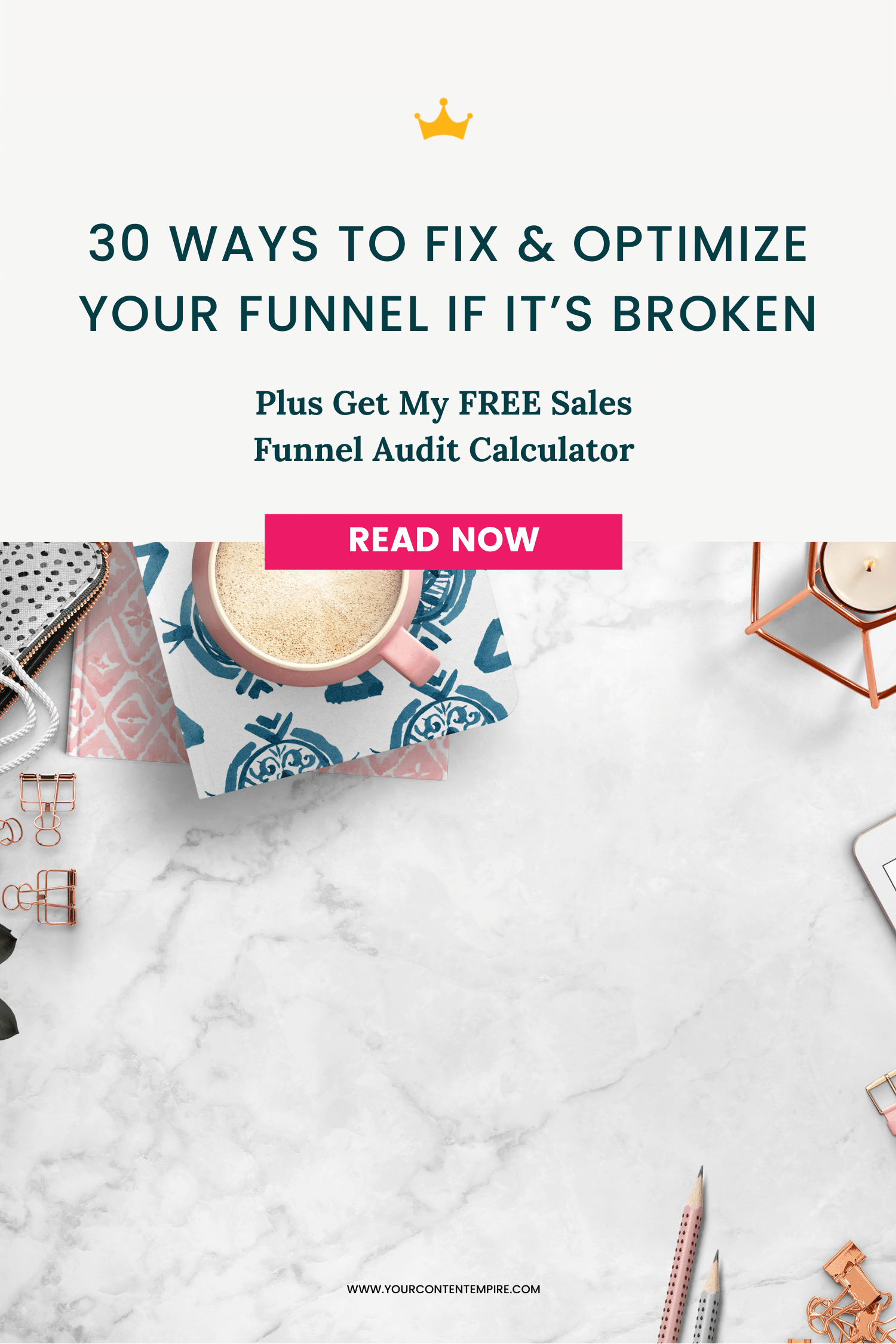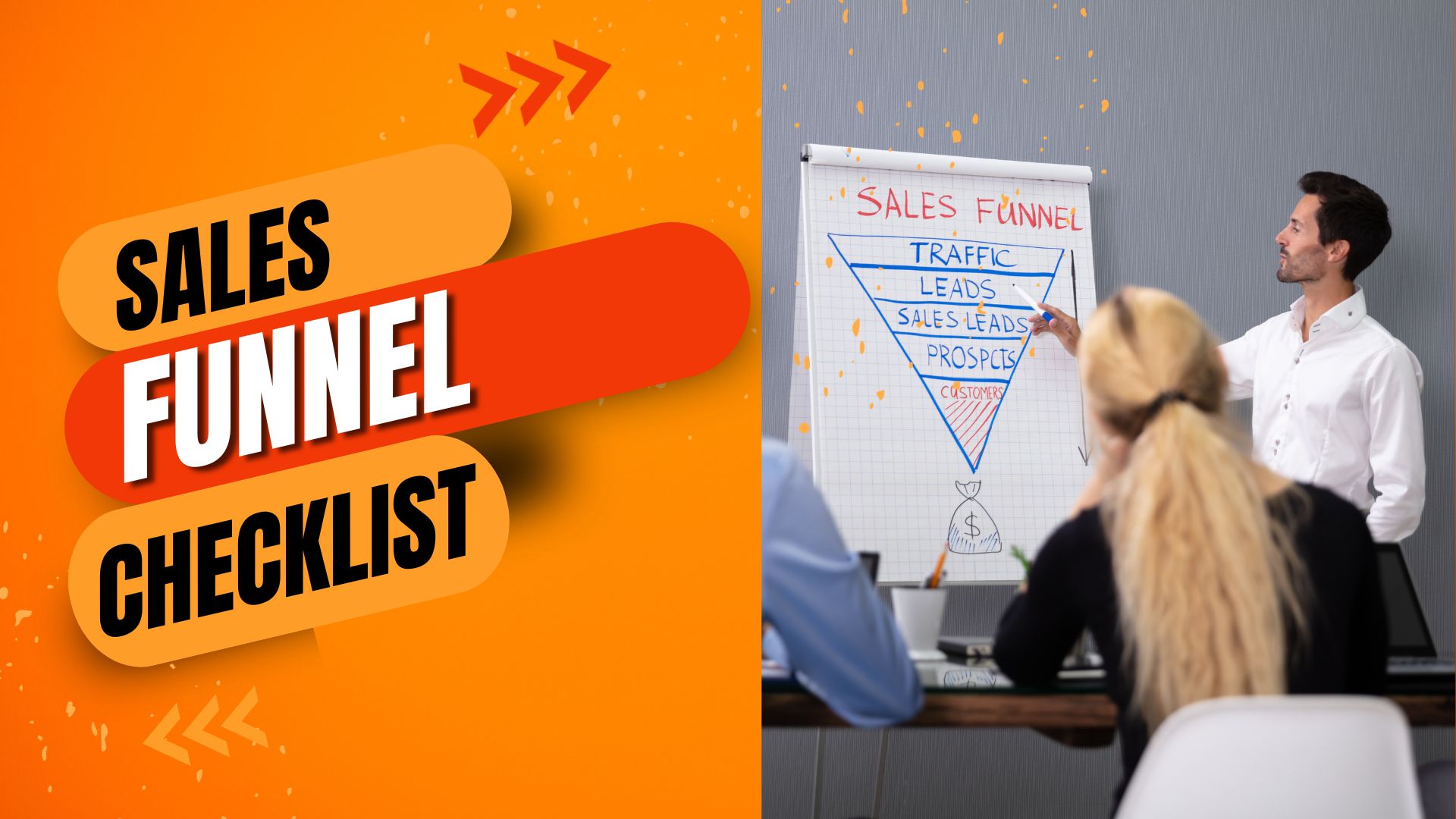A Sales Funnel Checklist ensures every stage of customer acquisition is optimized for conversion. It includes steps for attracting leads, nurturing prospects, and closing sales.
Crafting a reliable Sales Funnel is pivotal for turning prospects into loyal customers. This streamlined approach helps businesses understand what attracts potential clients and what might prompt them to make a purchase. To establish a successful sales funnel, it’s crucial to identify the necessary components such as lead capture strategies, lead magnets, engagement techniques, conversion tactics, and retention methods.
Understanding the customer journey at every touch point allows for fine-tuning the funnel for maximum efficiency and effectiveness. The goal is to create a seamless transition from initial interest to the final sale, ensuring each potential customer experiences a tailored and persuasive journey that leads to a purchase and beyond.

Credit: www.blueskymkt.com
Introduction To Sales Funnels
Understanding the sales funnel concept is crucial for any business aiming to streamline its marketing and sales strategy. Essentially, a sales funnel is a representation of the customer journey, from the initial stages when someone learns about your business, to the purchasing stage. A well-optimized sales funnel nurtures prospective customers through a series of marketing actions such as automated emails, targeted content, and social media interactions.
Key metrics to measure sales funnel performance include conversion rates, customer acquisition cost (CAC), customer lifetime value (CLTV), and sales velocity. By tracking these metrics, businesses can gain insights into their sales process’s efficacy, making informed decisions to enhance and optimize the funnel for better conversion rates and increased revenue.
| Key Metric | Description |
|---|---|
| Conversion Rates | Percentage of prospects that move to the next stage of the sales funnel. |
| Customer Acquisition Cost (CAC) | Total cost of acquiring a new customer. |
| Customer Lifetime Value (CLTV) | Projected revenue a customer will generate during their lifetime. |
| Sales Velocity | The speed at which leads move through the funnel and generate revenue. |

Credit: www.yourcontentempire.com
Essential Stages Of An Effective Sales Funnel
Capturing potential customer attention sets the stage for an effective sales funnel. To achieve this, creating engaging content that resonates with the audience is key. Using targeted SEO strategies to enhance visibility on search engines is equally important, as is leveraging social media platforms for broader outreach. An optimized landing page with a clear value proposition and strong call-to-actions (CTAs) can significantly increase the chances of turning visitors into leads.
Prospects that have shown interest need nurturing with valuable content. This might include educational materials, webinars, or e-books. Tailoring content to meet the specific interests and needs of leads can build trust and establish your brand as an authority in your field.
Encouraging leads to make a positive buying decision involves presenting compelling offers and incentives. Testimonials and case studies can also play a crucial role by providing social proof. Highlighting unique selling propositions (USPs) and creating a sense of urgency through limited-time promotions could further persuade prospects.
Streamlining the path to purchase requires a frictionless checkout process. Simplifying forms, providing multiple payment options, and ensuring mobile optimization are all critical steps. Transparent communication about shipping costs and return policies can also minimize cart abandonment and foster repeat business.
Sales Funnel Checklist: A Step-by-step Guide
Identifying Your Target Audience is pivotal for the success of your sales funnel. Conduct market research to understand demographics, interests, and behavior to tailor your approach.
Crafting Compelling Offers can significantly increase your conversion rates. Design offers that solve a problem or fulfill a need that is specific to your identified audience.
- Optimize Landing Pages by ensuring they are user-friendly, have a clear value proposition, and feature minimal distractions to bolster conversions.
- Leverage Social Proof and Testimonials to build trust and validate your product’s effectiveness.
Implementing Strong Calls-to-Action (CTAs) throughout your funnel is essential. Each CTA should be clear, compelling, and relevant to the stage of the funnel the prospect is in.
Use Email Marketing for effective follow-up with prospects who have shown interest. Personalized communication can nurture leads towards a purchase decision.
| Monitoring Funnel Metrics | A/B Testing for Sales Funnel Elements |
| Track key performance indicators (KPIs) to gauge the health of your funnel. | Continuously test different versions of your funnel elements to improve performance. |
Advanced Tactics To Maximize Conversion Rates
Segmentation and Personalization Techniques serve as the backbone for boosting conversion rates within a sales funnel. Creating personalized experiences based on customer data ensures content resonates with the audience. By leveraging this strategy, communications speak directly to the user’s preferences and behavior, significantly increasing the likelihood of conversion.
Retargeting Strategies to Re-engage Prospects involve tracking users who did not convert and presenting them with targeted ads tailored to their interests and previous interactions. This approach helps in reminding prospects about the products or services they viewed, thus enhancing the chances of closing the sale.
| Feature | Benefit |
|---|---|
| Chatbots and AI | Offer immediate assistance and interactive engagement, simulating a personal shopping assistant. |
| Upselling | Encourage purchase of a higher-end product than the one in question. |
| Cross-Selling | Suggest related products increasing average transaction value. |
Deploying Chatbots and AI for real-time customer interaction not only provides instant support but also captures and analyzes customer feedback and behavior in real time, guiding them through the sales process effectively.
Upselling and Cross-Selling Methods present opportunities to maximize revenue through strategic product recommendations and offers. These methods enhance the customer experience by providing value-added solutions and pairing complementary items, thereby boosting average order values.
Common Pitfalls To Avoid In Sales Funnel Creation
Ignoring customer feedback and data often leads to misaligned sales funnels that do not resonate with target audiences. It’s essential to integrate customer insights and analytics into funnel development to ensure relevance and effectiveness. Feedback loops can nurture a customer-centric approach, optimizing the funnel over time.
The mobile experience is crucial as a significant portion of consumers use mobile devices for research and purchases. A neglectful mobile strategy can result in a substantial loss of potential conversions. It’s paramount to design responsive funnels that provide a seamless experience across all devices.
Simplicity is key in the buying process; overcomplication can deter potential buyers. Achieving a straightforward path to purchase through clear instructions and an intuitive layout is critical for conversion optimization.
Lastly, the importance of aligning sales and marketing efforts can’t be overstated. Disjointed strategies between departments can confuse customers and weaken the sales funnel’s efficiency. Cohesion between sales and marketing teams ensures a unified approach to nurturing and converting leads.
Conclusion And Continuous Improvement
Measuring success and ROI in your sales funnel is essential for determining its effectiveness. Utilize key performance indicators (KPIs) such as conversion rates, customer acquisition cost (CAC), customer lifetime value (CLTV), and overall return on investment (ROI) to quantitatively assess your funnel’s performance. This data will not only illustrate the strengths and weaknesses of your strategy but also guide your decisions moving forward.
An iterative process is fundamental to refining your sales funnel. Scrutinize every stage for opportunities to optimize and enhance. Conduct A/B testing to compare different approaches and implement the strategies that yield the best results. Continuous adjustment and customization based on this testing is crucial for keeping your funnel effective over time.
Finally, staying updated with market changes and customer behavior is critical. Analyze emerging trends, listen to customer feedback, and remain flexible in your approach to adapt to new data and insights. This proactive attitude ensures that your sales funnel remains aligned with your target audience’s needs and the evolving market landscape.

Credit: matomo.org
Frequently Asked Questions Of Sales Funnel Checklist
What Are The 5 Stages Of The Sales Funnel?
The five stages of the sales funnel are awareness, interest, decision, action, and retention. Each stage guides potential customers closer to making a purchase and becoming loyal clients.
What Should Be Included In A Sales Funnel?
A sales funnel should include awareness, interest, decision, and action stages. Tailor content and strategies for each phase to guide potential customers towards a purchase.
What Is A Sales Funnel For Beginners?
A sales funnel is a marketing concept that maps out the journey a customer goes through when making any kind of purchase. It typically starts with awareness, leads to interest and decision, and ends with action, guiding potential customers to a sale.
How Do You Create A Sales Funnel Step By Step?
Define your target audience. Create a compelling offer to attract leads. Develop a landing page for conversion. Nurture leads with email sequences. Seal the deal with a strong call-to-action.
Conclusion
Crafting a successful sales funnel is an ongoing journey. Remember to review your checklist regularly and adapt to new insights. Keep your goals in focus and customer needs at the forefront. With diligence, you’ll turn prospects into loyal customers. Now, take the next step and elevate your sales strategy.

Ron D. Palermo is a distinguished figure in the financial landscape, specializing as a strategic investment expert. With a comprehensive background in finance and a keen analytical mindset, Ron D. Palermo has carved a niche as a trusted advisor in the dynamic field of strategic investments. Her career is marked by a strategic approach to investment decisions, where she combines in-depth market analysis with a forward-thinking perspective. Ron D. Palermo excels in identifying opportunities that align with overarching financial goals, whether in traditional markets or emerging sectors.
Known for her ability to navigate complexities and anticipate market trends, Ron D. Palermo provides invaluable insights to individuals and organizations seeking to optimize their investment portfolios. Her strategic investment expertise extends beyond short-term gains, focusing on creating robust, long-term financial strategies that align with clients’ unique objectives. As a thought leader in strategic investments, Ron D. Palermo continues to shape the conversation around effective investment planning and risk management, making her a go-to expert for those looking to navigate the intricacies of the financial landscape.


